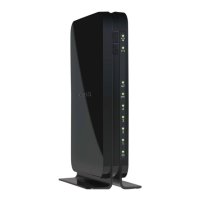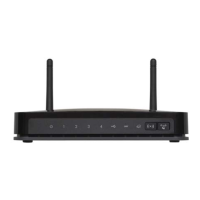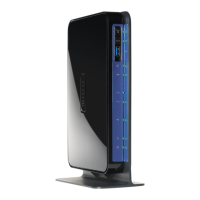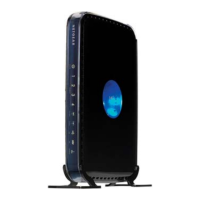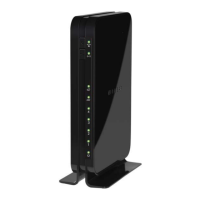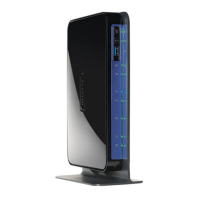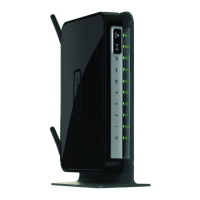16 | Chapter 2: Configuring Your Wireless Network and Security Settings
N300 Wireless Gigabit ADSL2+ Modem Router DGN3500 User Manual
• Put the antenna in a vertical position to provide the best side-to-side coverage. Put the
antenna in a horizontal position to provide the best up-and-down coverage.
• If
using multiple access points, it is better if adjacent access points use different radio
frequency channels to reduce interference. The recommended channel spacing between
adjacent access points is 5 channels (for example, use Channels 1 and 6, or 6 and 11).
The time it takes to establish a wireless connection
can vary depending on both your security
settings and placement. WEP connections can take slightly longer to establish. Also, WEP
encryption can consume more battery power on a notebook computer.
Wireless Security Options
Indoors, computers can connect over 802.11g wireless networks at a maximum range of up
to 300 feet. Such distances can allow for others outside your immedia
te area to access your
network.
Unlike wired network data, your wireless data t
ransmissions can extend beyond your walls
and can be received by anyone with a compatible adapter. For this reason, use the security
features of your wireless equipment. The wireless modem router provides highly effective
security features, which are covered in detail in this chapter. Deploy the security features
appropriate to your needs.
There are several ways you can enhance the security of your wireless network:
• Restric
t access based on MAC address. You can allow only trusted PCs to connect so
that unknown PCs cannot wirelessly connect to the wireless modem router. Restricting
access by MAC address adds an obstacle against unwanted access to your network, but
the data broadcast over the wireless link is fully exposed (see Restricting Wireless
Access to Your Network o
n page 21).
• T
urn off the broadcast of the wireless network name SSID. If you disable broadcast of
the SSID, only devices that have the correct SSID can connect. This nullifies wireless
network discovery feature of some products, such as Windows XP, but the data is still
exposed (see Hiding your wireless network name (SSID) o
n page 21).
• WEP. Wire
d Equivalent Privacy (WEP) data encryption provides data security. WEP
Shared Key authentication and WEP data encryption block all but the most determined
eavesdropper. This data encryption mode has been superseded by WPA-PSK and
WPA2-PSK (see Configuring WEP on p
age 24).
• WP
A-802.1x. Wi-Fi Protected Access (WPA) with user authentication implemented using
IEE 802.1x and RADIUS servers (see Configuring WPA-802.1x on p
age 26).
• WP
A-PSK (TKIP) + WPA2-PSK (AES). Wi-Fi Protected Access (WPA) using a
pre-shared key to perform authentication and generate the initial data encryption keys.
The very strong authentication along with dynamic per frame re-keying of WPA makes it
virtually impossible to compromise (see Configuring Mixed WPA-PSK+WPA2-PSK
Security o
n page 23).
For more information about wireless technology, see the link to the online document in
Virtual Private Networking Basics in Appendix B.

